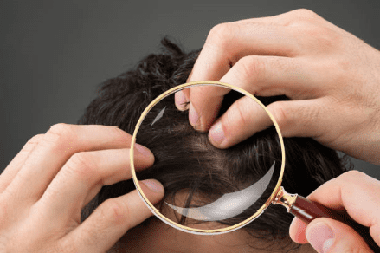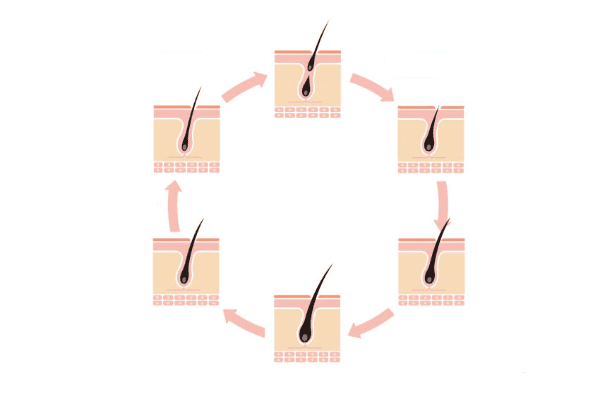Home cosmetology >>>> Hair loss reasons
Hair loss reasons.

The natural life of the hair, laid down by nature, is short-lived - from two to 7 years. In this case, three phases are noted: the growth phase, the intermediate phase, the phase of loss.
During the growth phase, the cells in the follicle divide intensively, and the hair growth rate is 1 centimeter per month. But it can vary depending on the season: hair grows faster in winter.
In the intermediate phase (within a few weeks), the hair stops growing, the follicle begins to gradually shrink in size and move towards the surface of the epidermis.
During the phase of hair loss, it falls out on its own, when a new one begins to grow under the old hair, but with a little effort, the hair can be easily pulled out by yourself.

Normally, there is a well-established balance between the number of hair follicles at different stages of their life, so the hairline is usually constant, but if this balance is disturbed, then hair thinning or baldness occurs .
The endocrine system plays an important role in the life of hair. She controls the quality of hair, the change of one type of hair to another, the appearance of hair in new areas, where they did not grow before.
There are many factors that can affect the life cycle of the hair and accelerate hair loss or stop hair growth completely:
Disorders in the endocrine system. Hormonal disruptions or diseases caused by a shift in hormonal balance (thyroid disease, diabetes mellitus, disorders in the production of sex hormones (androgens, estrogens)) are a common cause of hair loss . Androgens are responsible for the growth of beards and mustaches, as well as hair growth in some areas of the body. In addition, they are responsible for the suppression of scalp growth. Estrogens cause scalp hair growth and tend to inhibit facial and body hair growth. Such changes can be both reversible and irreversible.
Hair loss during pregnancy or the postpartum period is also associated with shifts in hormonal processes, but this is usually a reversible process.
Features of the endocrine system are associated with an excess content of the hormone dihydrotestosterone (one of the representatives of the male hormones of the androgen group) in the body (causes androgenic alopecia). In women, the amount of androgens increases with age. In men, different levels of androgen production are a feature of the functioning of the endocrine system. At the same time, there is an increased sensitivity of the hair follicle to this hormone and / or an increased activity of a certain enzyme (5-alpha reductase), which directly converts testosterone into dihydrotestosterone.
Genetic predisposition may be the factor that will determine the peculiar work of the endocrine system for the production of hormones. This also includes such a cause of hair loss as autoimmune diseases .
Infectious diseases, for example, diseases of a viral (viral skin infection ) or fungal nature (ringworm) can destroy both the hair itself and the area of the skin with the follicle.
Skin diseases lead to temporary or permanent changes in the structure of skin cells and the destruction of hair follicles due to inflammation, atrophy or scarring of the skin (seborrhea, psoriasis).
Nervous shocks or prolonged stress. During stressful conditions, the chemical composition of the blood changes and metabolic processes are disrupted, which leads to disruptions in the delivery of nutrients to various systems of the body. Protracted illnesses, emotional stress, physical stress can give impetus to such changes, since they all relate to stressful conditions of the body.
Avitaminosis, hypovitaminosis or hypervitaminosis violate the quantitative composition of components useful for the body as a result of diets, unsuccessful vitamin therapy, and erroneous dosages. Hair follicles will also be affected.
Side effects of drugs and medical procedures, including chemotherapy and radiation, cause reversible hair loss.
Mechanical and chemical damage to the hair follicle or hair. Hair pulled tight; fleece; rough combing of hair; perm; bleaching; coloring with dyes containing harmful components will also cause hair to fall out .
Poor ecology, for example, emissions of chemically harmful substances into the atmosphere, subzero temperatures can affect the condition of the scalp and injure the hair follicles. The structure of the hair itself can change in such a way that it will make the hair brittle and brittle.
In addition, hair begins to fall out in case of chronic poisoning with toxic substances (for example, in a toxic atmosphere at work), or as a result of radiation exposure to a dose exceeding the permissible level.

Read

Read



























